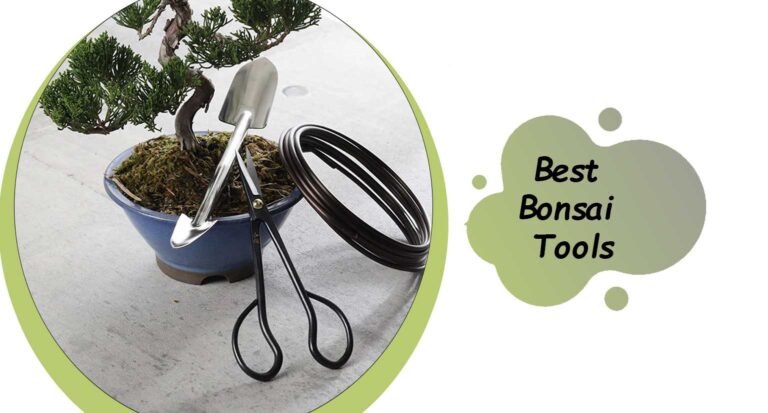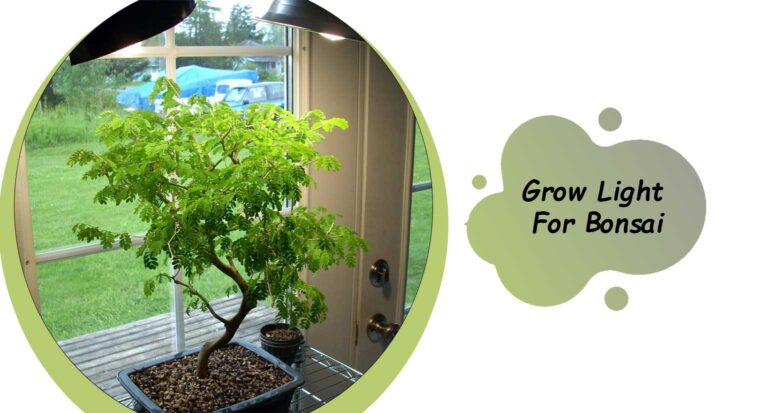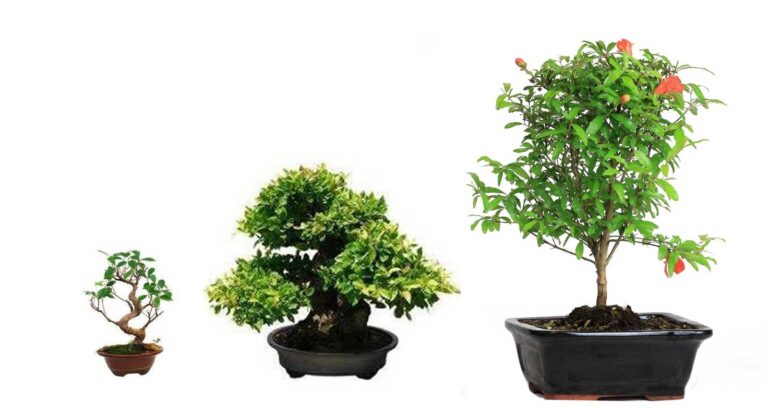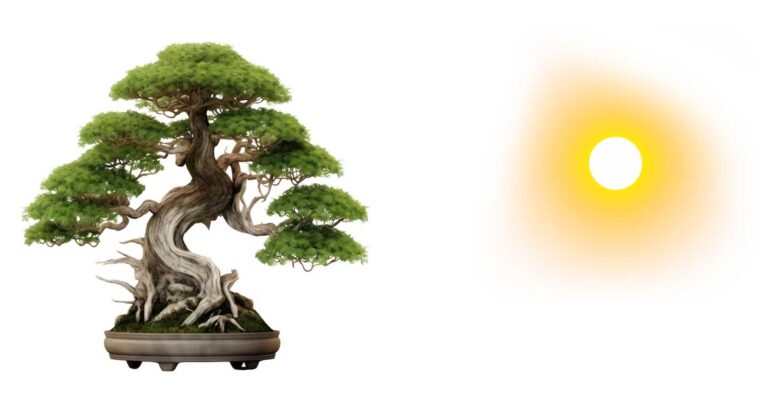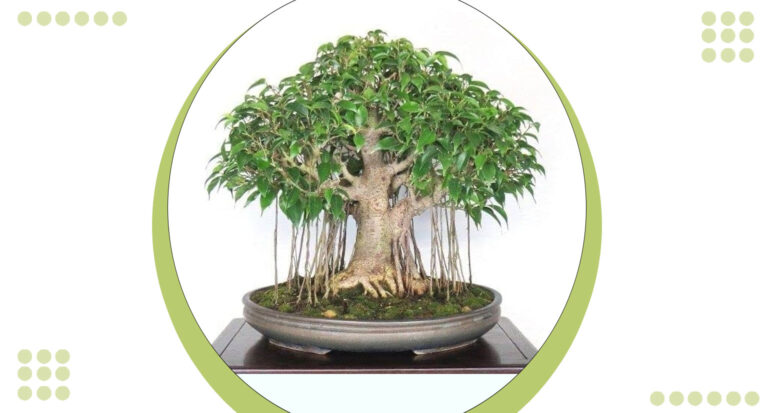When to Prune Japanese Maple Bonsai?
Welcome to our comprehensive guide on the art of pruning Japanese Maple Bonsai trees. Pruning is a vital skill that allows enthusiasts to shape and maintain the exquisite beauty of these miniature marvels.
Whether you’re a seasoned bonsai gardener or just beginning your journey, understanding the perfect time When to prune japanese maple bonsai? is crucial to ensure the health and vibrancy of your Japanese Maple Bonsai.
In this informative article, we’ll delve into the art and science of pruning these iconic trees, helping you achieve stunning results in your bonsai cultivation endeavors.
Japanese Maple Bonsai
Before we dive into the intricacies of pruning, it’s essential to grasp the essence of the Japanese Maple Bonsai. These miniature wonders are a true testament to the artistry of bonsai cultivation.
Japanese Maple Bonsai, scientifically known as Acer palmatum, are revered for their stunning, delicate leaves, vibrant colors, and gracefully contorted trunks.
Originating in Japan, these trees have a rich cultural history and symbolize serenity and longevity. The art of growing Japanese Maple Bonsai involves meticulously nurturing them to mimic their full-sized counterparts, capturing the essence of nature’s beauty in a small, captivating form.
Before you embark on your pruning journey, let’s explore the unique characteristics and requirements of these enchanting bonsai trees.
When to Prune Your Japanese Maple Bonsai
Pruning is the heartbeat of bonsai artistry, and timing is everything when it comes to Japanese Maple Bonsai. Knowing when to prune is essential to achieve the desired shape, encourage healthy growth, and maintain the tree’s overall well-being.
The ideal time to prune your Japanese Maple Bonsai is during the dormant season, which typically falls in late winter to early spring.
During this period, the tree is less vulnerable to stress and is better equipped to heal and recover from the pruning cuts. Pruning in the dormant season also allows you to get a clearer view of the tree’s structure without the distraction of leaves.
However, it’s crucial to note that not all pruning should happen at the same time. Specific techniques, such as structural pruning and fine pruning, have distinct optimal timing.
We’ll explore these techniques in detail in the following sections to help you make informed decisions about when and how to prune your Japanese Maple Bonsai.
Why Prune a Japanese Maple Bonsai?
Understanding the reasons behind pruning is fundamental to the art of cultivating a stunning Japanese Maple Bonsai. Pruning serves several vital purposes, each contributing to the overall health and aesthetic appeal of your bonsai tree.
1. Shape and Structure:
Pruning allows you to shape and refine the structure of your Japanese Maple Bonsai. It helps you achieve the desired aesthetic, mimicking the grace and beauty of mature maple trees in miniature form.
By carefully removing unwanted branches and foliage, you can create a harmonious and balanced silhouette.
2. Encourage Growth:
Pruning stimulates new growth in your bonsai. By strategically removing certain branches and leaves, you redirect the tree’s energy to areas where it’s needed most. This encourages the development of finer branches and foliage, contributing to the bonsai’s overall elegance.
3. Health and Vigor:
Regular pruning promotes the overall health and vigor of your Japanese Maple Bonsai. It allows for better air circulation and light penetration, reducing the risk of disease and ensuring that each part of the tree receives adequate nourishment. Trimming away dead or diseased branches prevents the spread of issues and keeps your bonsai thriving.
4. Size Control:
Bonsai cultivation often involves keeping trees small and compact. Pruning is a primary method for controlling the size of your Japanese Maple Bonsai, allowing you to maintain its miniature stature while still showcasing its natural beauty.
By understanding these essential reasons for pruning, you’ll be better equipped to nurture your Japanese Maple Bonsai into a masterpiece of living art.
The Pruning Process for Your Japanese Maple Bonsai
Pruning a Japanese Maple Bonsai is a delicate and artistic endeavor that requires careful planning and execution. To help you achieve the desired results and maintain the health of your bonsai, let’s delve into the step-by-step process of pruning:
1. Assess Your Bonsai:
Start by thoroughly examining your Japanese Maple Bonsai. Identify the branches and foliage that need attention. Consider the tree’s overall design and the specific goals you have for its shape and structure.
2. Gather the Right Tools:
Ensure you have the necessary tools on hand, including sharp pruning shears or scissors. Clean and sterilize your tools to prevent the spread of diseases or infections during the pruning process.
3. Decide on the Type of Pruning:
Different types of pruning serve distinct purposes. Structural pruning involves shaping the primary branches and trunk, while fine pruning focuses on refining smaller branches and leaves. Decide which type of pruning is needed for each part of your bonsai.
4. Prune During the Dormant Season:
As mentioned earlier, the ideal time for pruning your Japanese Maple Bonsai is during the dormant season, which typically occurs in late winter to early spring. This minimizes stress on the tree and allows for faster healing.
5. Start with Structural Pruning:
Begin by addressing the major branches and trunk. Remove any branches that disrupt the desired shape or create unnecessary crowding. Use clean cuts at a slight angle to encourage proper healing.
6. Fine Pruning and Detail Work:
After structural pruning, focus on refining the finer branches and leaves. Remove any unwanted growth, such as crossing branches or excessive foliage that obscures the tree’s structure. Pay attention to the overall balance and aesthetics.
7. Monitor and Care:
Regularly monitor your bonsai after pruning. Keep an eye on new growth and adjust your pruning schedule accordingly.
Ensure your bonsai receives appropriate watering, fertilization, and protection from extreme weather conditions to support its recovery.
8. Patience and Observation:
Remember that the art of bonsai is a patient one. Pruning is a process that evolves over time. Take the time to observe your Japanese Maple Bonsai’s response to each pruning session and adjust your techniques as needed to achieve your desired vision.
By following these steps and embracing the artistry of pruning, you can nurture your Japanese Maple Bonsai into a captivating masterpiece that embodies the beauty and tranquility of nature in miniature form.
Preparation for Pruning Your Japanese Maple Bonsai
Before you embark on the pruning journey for your Japanese Maple Bonsai, it’s essential to prepare adequately. Proper preparation sets the stage for a successful and rewarding pruning experience. Here are the key steps to ensure you’re ready:
1. Gather Your Tools:
Having the right tools is crucial for precise and safe pruning. Ensure you have sharp and clean pruning shears or scissors, concave cutters, wire cutters (for wiring if needed), and a clean, sterilized tool storage container. Sharp tools make clean cuts and minimize stress on the tree.
2. Study Your Bonsai:
Take the time to thoroughly study your Japanese Maple Bonsai. Observe its current shape, structure, and overall health. Identify areas that need attention and consider the design goals you have in mind.
3. Plan Your Pruning Strategy:
Based on your observations and design objectives, create a pruning strategy. Decide which branches to prune, whether you’ll focus on structural pruning or fine pruning, and the overall shape you want to achieve. A well-thought-out plan ensures you’re not making hasty decisions during the pruning process.
4. Choose the Right Time:
Timing is critical in bonsai pruning. As previously mentioned, the best time to prune your Japanese Maple Bonsai is during the dormant season, typically in late winter to early spring. This is when the tree is least stressed and can heal most effectively.
5. Prepare Your Workspace:
Set up a clean and organized workspace. Ensure you have adequate lighting and a stable surface to work on. Lay out your tools and keep them within easy reach to avoid any interruptions during the pruning process.
6. Wear Protective Gear:
While pruning is generally a safe activity, wearing gloves and protective eyewear is advisable. This ensures your hands are protected from potential scratches or irritations, and your eyes are shielded from debris while working on your bonsai.
7. Visualize the End Result:
Before making your first cut, take a moment to visualize the end result. Envision the graceful shape and balanced structure you aim to achieve with your Japanese Maple Bonsai. This mental image will guide your pruning decisions and help you stay on track.
With these preparations in place, you’re ready to embark on the pruning process with confidence and precision. Remember that each pruning session is an opportunity to nurture and shape your bonsai into a living work of art.
Health and Disease Management for Your Japanese Maple Bonsai
Maintaining the well-being of your Japanese Maple Bonsai is essential for its longevity and aesthetic appeal. In addition to pruning, effective health and disease management are key aspects of bonsai care. Here’s how to ensure your bonsai remains healthy and resilient:
1. Regular Inspections:
Make it a habit to regularly inspect your Japanese Maple Bonsai. Check for any signs of stress, disease, or pests. Early detection allows for prompt intervention and better chances of recovery.
2. Adequate Watering:
Proper watering is crucial for your bonsai’s health. Japanese Maple Bonsai prefer moist but well-draining soil. Water your bonsai when the top layer of soil feels slightly dry to the touch. Avoid overwatering, as it can lead to root rot.
3. Fertilization:
Provide your bonsai with balanced and appropriate fertilization. Use a slow-release bonsai fertilizer during the growing season to ensure your tree receives essential nutrients. Avoid excessive fertilization, which can harm the tree.
4. Sunlight and Airflow:
Place your bonsai in a location that receives the right amount of sunlight. Japanese Maple Bonsai thrive in partial shade to dappled sunlight. Ensure there is proper airflow around the tree to prevent fungal issues and encourage healthy growth.
5. Pruning for Health:
Besides shaping, pruning can also promote health. Remove dead or diseased branches promptly to prevent the spread of issues. Ensure that your pruning tools are clean and sterilized to avoid introducing infections.
6. Pest Control:
Keep an eye out for common pests like aphids, scale insects, and spider mites. If you notice an infestation, address it immediately with the appropriate organic or chemical treatments. Quarantine new bonsai additions to prevent introducing pests to your collection.
7. Disease Prevention:
Prevention is often the best approach to disease management. Ensure good hygiene by removing fallen leaves and debris from the soil surface.
Avoid overhead watering, which can promote fungal diseases. Prune for proper airflow and reduce humidity around the tree.
8. Winter Protection:
During the winter months, provide protection against freezing temperatures. Consider moving your Japanese Maple Bonsai to a sheltered location, using frost blankets, or employing other methods to safeguard it from extreme cold.
Remember that proactive care and attentive maintenance are the keys to a thriving Japanese Maple Bonsai. By combining these health and disease management practices with thoughtful pruning, you’ll nurture a bonsai that’s not only visually captivating but also robust and resilient.
Essential Tools and Techniques
Pruning your Japanese Maple Bonsai effectively requires the right tools and a solid understanding of various pruning techniques. Here’s a guide to the essential tools and techniques to help you achieve the desired results:
1. Pruning Shears or Scissors: These are your primary cutting tools. Invest in high-quality, sharp pruning shears or scissors to make clean cuts without causing unnecessary stress to the tree.
2. Concave Cutters: These specialized cutters are excellent for removing larger branches while leaving a concave wound that heals more effectively. They help maintain the tree’s aesthetics.
3. Wire Cutters: If you use wire to shape and train branches, wire cutters are essential for safe and precise removal of the wire without damaging the tree.
4. Knob Cutters: Knob cutters are useful for cleanly removing knobs or protrusions left after branch pruning. They leave a smoother surface for healing.
Pruning Techniques:
1. Structural Pruning: This technique focuses on shaping the primary branches and trunk of your bonsai. It involves making strategic cuts to establish the overall structure and design of your tree. Structural pruning is typically done during the dormant season to minimize stress on the tree.
2. Fine Pruning: Fine pruning is about refining the smaller branches and leaves of your Japanese Maple Bonsai.
It involves removing excess growth, crossing branches, and any foliage that obscures the tree’s structure. Fine pruning can be done during the growing season as needed to maintain the tree’s aesthetics.
3. Pinching: Pinching is a gentle technique used to encourage branching and finer foliage. Simply pinch or snip the tips of new shoots between your fingers to promote bushier growth. This technique is especially useful for maples.
4. Defoliation: While not always necessary, defoliation can be used to reduce leaf size and encourage ramification (the development of fine branches).
It should be done with care and typically during the growing season, followed by proper aftercare to ensure the tree’s health.
5. Bud Pruning: Bud pruning involves selectively removing buds to control the direction of growth. It’s used to redirect the tree’s energy and encourage specific branches or areas to develop further.
6. Wiring: Wiring is a technique used to shape and train branches. It involves gently wrapping wire around branches and bending them into the desired position.
Wiring should be done with caution to avoid damaging the tree’s bark. Use wire cutters to remove the wire when it’s no longer needed.
7. Aftercare: After each pruning session, provide proper aftercare by ensuring your bonsai receives adequate watering, fertilization, and protection from extreme weather conditions. Regularly monitor the tree’s response to pruning and make adjustments as necessary.
By mastering these essential tools and techniques, you’ll be well-equipped to sculpt and care for your Japanese Maple Bonsai with precision and artistry.
Watering and Fertilizing Your Japanese Maple Bonsai
Proper watering and fertilizing are critical aspects of bonsai care that directly impact the health and vitality of your Japanese Maple Bonsai. Here’s a comprehensive guide on how to water and fertilize your bonsai effectively:
Watering:
1. Observation is Key: Pay close attention to the moisture level of the soil. Bonsai pots have limited space for water, so it’s essential to avoid both overwatering and underwatering.
2. The Right Soil Mix: Ensure your bonsai is potted in well-draining soil. This helps prevent root rot and ensures the roots receive the oxygen they need.
3. Finger Test: Before watering, insert your finger about an inch into the soil. If it feels slightly dry at this depth, it’s time to water. If it’s still moist, wait a bit longer.
4. Watering Technique: Water your bonsai thoroughly but gently. Use a watering can or hose with a fine nozzle to prevent soil erosion. Water until you see water coming out of the drainage holes at the bottom of the pot.
5. Frequency: The frequency of watering depends on several factors, including the size of the pot, the type of soil, the climate, and the season. During the growing season (spring through early fall), you may need to water more frequently. In winter, reduce watering to avoid freezing roots.
6. Morning Watering: Water your bonsai in the morning whenever possible. This allows excess moisture to evaporate during the day, reducing the risk of fungal diseases.
7. Avoid Overwatering: Overwatering can suffocate the roots and lead to root rot. Always err on the side of underwatering rather than overwatering. Adjust your watering schedule as needed based on your specific bonsai’s requirements.
Fertilizing:
1. Choose the Right Fertilizer: Use a balanced, slow-release bonsai fertilizer. Look for a formula with equal parts nitrogen (N), phosphorus (P), and potassium (K), such as a 10-10-10 or 20-20-20 mix. Alternatively, choose a specialized bonsai fertilizer.
2. Fertilizing Schedule: Fertilize your Japanese Maple Bonsai during the growing season, from spring to early fall. Start fertilizing when you see new growth, typically in early spring, and continue every 4-6 weeks.
3. Application: Apply the fertilizer according to the manufacturer’s instructions. It’s essential not to over-fertilize, as this can harm your bonsai. Measure the fertilizer carefully and evenly distribute it on the soil surface.
4. Flush the Soil: To prevent salt buildup, flush the soil with plain water every 4-6 weeks. Water your bonsai thoroughly without fertilizer, allowing excess salts to leach out of the soil.
5. Winter Rest: During the dormant winter season, reduce or stop fertilization. Your bonsai’s nutrient requirements are lower at this time, and over-fertilizing can stress the tree.
Remember that each Japanese Maple Bonsai is unique, so adjust your watering and fertilizing routine based on your tree’s specific needs. Consistency and careful observation are key to maintaining a healthy and vibrant bonsai.
Repotting and Transplanting Your Japanese Maple Bonsai
Repotting and transplanting are essential practices in the care of your Japanese Maple Bonsai. These activities promote healthy root development, refresh the soil, and ensure your bonsai’s long-term well-being. Here’s a step-by-step guide on how to repot and transplant your bonsai:
Repotting:
Repotting is the process of moving your bonsai into a slightly larger pot with fresh soil. It’s typically done every 2-3 years for young bonsai and 4-5 years for more mature ones. Here’s what you need to do:
1. Timing: The best time to repot your Japanese Maple Bonsai is during early spring, just before the growing season begins. This allows the tree to recover quickly.
2. Prepare the New Pot: Select a slightly larger pot with good drainage holes. Ensure it’s clean and sterile. Cover the drainage holes with mesh to prevent soil from escaping.
3. Remove the Bonsai: Gently remove the bonsai from its current pot. Be careful not to damage the roots or disturb the root ball excessively.
4. Root Pruning: Trim the outer layer of roots to encourage new growth and prevent root-bound conditions. Remove any damaged or diseased roots.
5. Soil Mix: Prepare a well-draining bonsai soil mix. Japanese Maple Bonsai prefer a mix that includes organic matter, such as composted bark, along with inorganic components like akadama, pumice, and lava rock. Ensure proper soil composition for your specific tree’s needs.
6. Reposition in the New Pot: Place a layer of fresh soil in the bottom of the new pot. Position the bonsai in the pot, ensuring that the tree’s surface roots are about 1-2 inches below the rim of the pot.
7. Fill with Soil: Carefully fill the pot with the prepared soil mix, working it around the roots to eliminate air pockets. Tamp the soil gently to secure the bonsai in place.
8. Water Thoroughly: After repotting, water your Japanese Maple Bonsai thoroughly to settle the soil and hydrate the roots. Avoid exposing the tree to direct sunlight for a few weeks to minimize stress.
Transplanting:
Transplanting is a more extensive procedure involving moving your bonsai to a different location, garden, or landscape. It’s typically done less frequently than repotting and often requires more planning. Here’s how to transplant your Japanese Maple Bonsai:
1. Timing: The best time to transplant your bonsai is during the dormant season, either in late winter or early spring before new growth starts. This minimizes stress on the tree.
2. Choose a New Location: Select the new location carefully, considering factors like sunlight, climate, and space requirements. Ensure the new environment suits the specific needs of your Japanese Maple Bonsai.
3. Prepare the New Site: Prepare the soil and area where you’ll transplant the bonsai. Make sure the soil is well-draining and nutrient-rich.
4. Dig the Hole: Dig a hole in the new location that’s slightly larger than the root ball of your bonsai. Ensure it’s deep enough to accommodate the roots comfortably.
5. Remove the Bonsai: Gently remove the bonsai from its current location. Be cautious not to damage the roots.
6. Plant in the New Location: Position the bonsai in the prepared hole in the new location. Ensure that the surface roots are at the same depth as they were in the previous location.
7. Backfill with Soil: Fill the hole with soil, tamping it down gently to secure the bonsai. Water thoroughly to settle the soil and hydrate the roots.
8. Provide Aftercare: After transplanting, monitor your Japanese Maple Bonsai closely and provide adequate care, including regular watering and protection from extreme weather conditions.
Both repotting and transplanting are crucial to the long-term health and development of your Japanese Maple Bonsai.
With proper care and attention to these practices, your bonsai will continue to thrive and enchant with its beauty for years to come.
Seasonal and Environmental Factors Affecting Your Japanese Maple Bonsai
Seasonal and environmental conditions play a significant role in the growth and well-being of your Japanese Maple Bonsai.
Understanding how these factors affect your bonsai is crucial for its care and maintenance. Here’s a comprehensive guide to managing your bonsai throughout the changing seasons and varying environmental conditions:
Spring:
Growth and Pruning: Spring marks the start of the growing season for your bonsai. New shoots and leaves emerge during this time.
It’s an ideal season for structural pruning, as you can see the tree’s form more clearly without dense foliage. Be attentive to pest activity as temperatures rise.
Summer:
Sunlight and Heat: Japanese Maple Bonsai thrive in partial shade to dappled sunlight. In hot summer months, provide protection from direct, intense sunlight to prevent leaf scorching. Ensure adequate airflow to reduce the risk of fungal diseases.
Watering: Summer typically requires more frequent watering due to higher temperatures and increased evaporation.
Continue the finger test to determine when your bonsai needs water. Water early in the morning or late in the evening to avoid heat stress.
Fertilization: Continue fertilizing your bonsai during the growing season, following the schedule and guidelines previously discussed. Avoid over-fertilization, which can lead to excessive growth and stress.
Fall:
Leaf Color Change: Enjoy the breathtaking display of fall foliage as your Japanese Maple Bonsai’s leaves change colors. This is a natural part of the tree’s cycle, and it’s best to let it happen without interference.
Reduced Growth: As temperatures drop, growth slows down. Reduce fertilization to accommodate the tree’s reduced nutrient requirements. Continue regular watering, but adjust it based on the tree’s needs and weather conditions.
Protection from Frost: As winter approaches, consider providing frost protection for your bonsai, especially if you live in a colder climate. Frost blankets or a sheltered location can help prevent freezing damage.
Winter:
Dormancy: Winter is the dormant season for your Japanese Maple Bonsai. Growth ceases, and the tree requires less water and no fertilization.
Reduce watering, but ensure the soil doesn’t completely dry out. Avoid pruning during this period, as the tree is more susceptible to stress.
Protection from Cold: Protect your bonsai from extreme cold by moving it to a sheltered location or using frost protection measures. Ensure the pot is elevated to prevent it from freezing to the ground.
Indoor Care: In extremely cold climates, some enthusiasts opt to bring their bonsai indoors for the winter. If you choose this option, place the bonsai near a bright window, away from heating vents, and maintain appropriate humidity levels.
Year-Round Environmental Factors:
Humidity: Japanese Maple Bonsai prefer moderate humidity levels. In dry climates or indoor settings, consider using humidity trays, misting the foliage occasionally, or employing a humidifier to maintain suitable humidity levels.
Wind: Protect your bonsai from strong winds, which can damage delicate branches and foliage. Windbreaks or strategically placing your bonsai can help shield it from gusts.
Pests and Diseases: Regularly inspect your bonsai for pests and diseases throughout the year. Early detection allows for prompt intervention. Use organic or chemical treatments as needed, following the manufacturer’s instructions.
Soil and Potting: Monitor the health of your bonsai’s soil and pot. Repot as necessary to refresh the soil and promote healthy root growth. Ensure the pot’s drainage holes are clear to prevent waterlogging.
By carefully considering the seasonal and environmental factors that impact your Japanese Maple Bonsai, you can provide the ideal conditions for its growth, ensuring it thrives and remains a captivating masterpiece of nature in miniature form.
Pruning Young vs. Mature Japanese Maple Bonsai Trees
Pruning is a crucial aspect of bonsai care, but the approach differs between young and mature Japanese Maple Bonsai trees.
Understanding how to prune each stage effectively is essential to promote healthy growth and maintain the desired aesthetic. Here’s a guide on pruning young and mature bonsai trees:
Pruning Young Japanese Maple Bonsai Trees:
Young bonsai trees are typically in the early stages of development. The focus is on shaping the basic structure and encouraging vigorous growth. Here’s how to prune young Japanese Maple Bonsai trees:
1. Structural Pruning: Young trees require structural pruning to establish the primary branches and overall design. Selectively prune branches to create an open, balanced structure. This initial shaping sets the foundation for the bonsai’s future appearance.
2. Regular Pinching: Young Japanese Maple Bonsai respond well to pinching. Pinch or snip the tips of new shoots to encourage branching and finer growth. This technique helps create ramification, the development of smaller branches.
3. Vigorous Growth Control: Young bonsai trees often exhibit vigorous growth. To maintain the desired shape and prevent overcrowding, prune back excessively long or thick branches. This directs energy to other areas of the tree.
4. Directional Pruning: Encourage branches to grow in specific directions by pruning back to outward-facing buds. This helps create a more open and balanced canopy.
5. Wiring: Young trees are more flexible and responsive to wiring. Use wiring to shape branches and achieve the desired design. Ensure the wire doesn’t cut into the bark by checking and adjusting regularly.
6. Regular Monitoring: Young trees require frequent monitoring and maintenance. Check for crossing branches, dense foliage, and irregular growth patterns. Prune and shape as needed throughout the growing season.
Pruning Mature Japanese Maple Bonsai Trees:
Mature bonsai trees have already established their primary structure and require different pruning considerations.
The focus shifts to refinement and maintaining the tree’s health. Here’s how to prune mature Japanese Maple Bonsai trees:
1. Fine Pruning: Mature trees benefit from fine pruning to maintain the overall shape and aesthetics. Remove crossing branches, deadwood, and any foliage that obscures the tree’s structure.
2. Maintenance of Ramification: Continue pinching and pruning to encourage ramification and maintain a more refined appearance. This involves refining smaller branches and leaves.
3. Selective Pruning: Prune selectively to maintain the desired silhouette and balance. Be cautious not to remove too much foliage at once, as mature trees have limited energy reserves.
4. Bud Pruning: Control growth direction by selectively pruning buds to encourage branching where needed. This technique helps maintain the tree’s design and structure.
5. Healing and Protection: Pay close attention to pruning cuts on mature trees. Ensure they heal properly by using wound sealant paste or cut paste. Protect exposed wood from pests and disease.
6. Restraint in Wiring: While wiring can still be used on mature trees, exercise caution to avoid damaging older and thicker branches. Use it primarily for minor adjustments and not for significant reshaping.
7. Periodic Styling: Consider periodic styling sessions to refresh the tree’s appearance. This involves more extensive work, including wiring and branch positioning, to refine the overall design.
8. Patience: Mature Japanese Maple Bonsai trees require patience and gradual adjustments. Avoid drastic changes in shape or size, as it can stress the tree. Focus on maintaining the tree’s health and enhancing its natural beauty.
By tailoring your pruning approach to the specific stage of your Japanese Maple Bonsai tree, you can ensure its continued health and beauty, whether it’s young and developing or mature and gracefully refined.



